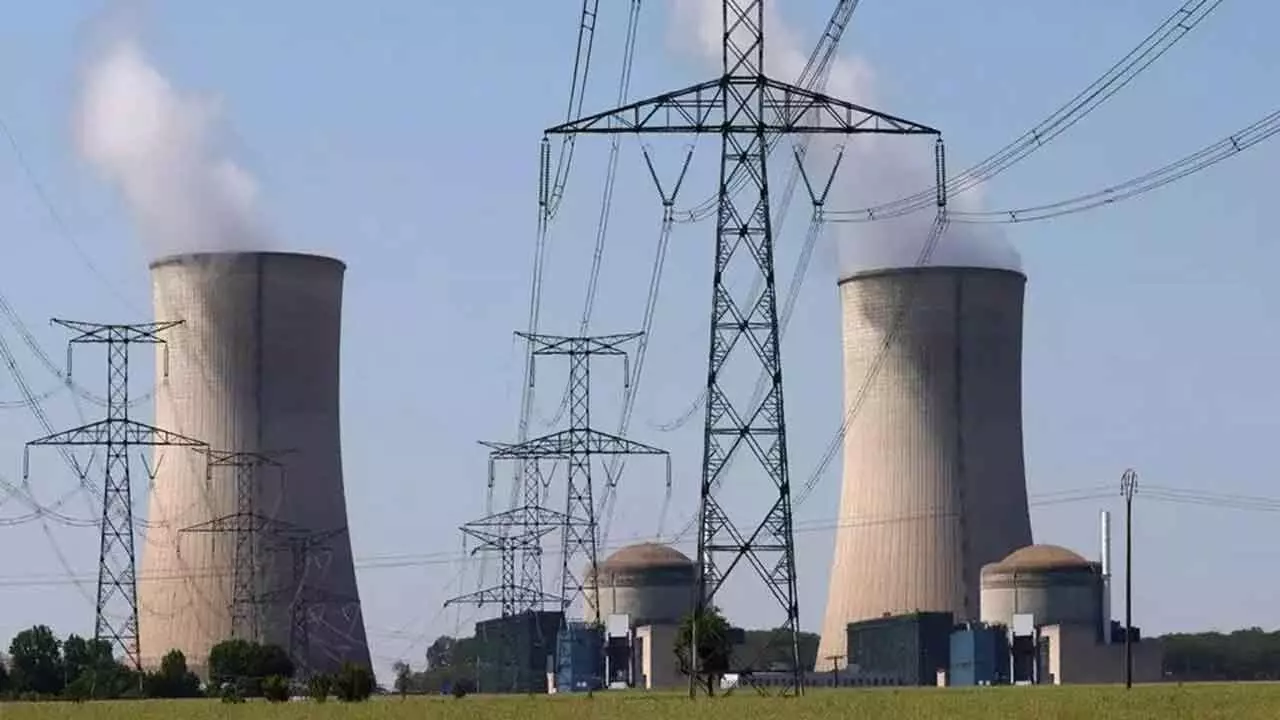Can Small Modular Reactors Be The Solution For India’s CBAM Problem?
Faced with potential carbon tariffs on exports like steel and aluminum, India needs to transition its energy-intensive industries to cleaner sources
Can Small Modular Reactors Be The Solution For India’s CBAM Problem?

While large nuclear plants are an option, SMRs offer a potentially faster solution by utilising existing industrial sites and avoiding land acquisition delays. However, significant hurdles remain for SMR deployment in India, including the lack of commercially operational SMRs globally, existing safety regulations, nuclear liability laws, and the need for private sector participation
In the 2025-26 budget, the Government announced a target of 100 GWe of nuclear power generation capacity by 2047. It has also budgeted Rs 20,000 crores to research and develop Small Modular Reactors (SMR).
The current installed capacity of nuclear power in India is 8 GWe. The target of 100 GWe represents more than a ten-fold increase in the installed capacity of nuclear power. Why has the government pivoted towards nuclear power in such a big way? India can move towards the 100 GWe target by building many large nuclear power plants like the Kudankulam nuclear power plants, rated at 1000 MWe each. Yet the same budget declaration also talks about shifting the focus to SMRs that only generate 100 or 200 MWe each. Why this apparent contradiction in the same policy announcement? The answer to these questions is climate change and, more specifically, the Carbon Border Adjustment Mechanism (CBAM)
Climate change does not recognise international boundaries and requires collective action by all countries. One country may stop producing a widget because it is very energy-intensive and causes high carbon emissions. However, if it continues to import the same widget from another country, the problem of carbon emissions will not be solved on a planetary scale; it will only shift from one country to another. This phenomenon is called carbon leakage.
The European Union (EU) introduced the Carbon Border Adjustment Mechanism (CBAM) to address the problem of carbon leakage. CBAM imposes a carbon tariff on imported goods with high carbon footprints, ensuring that imports bear a similar carbon price as EU-produced goods under the EU Emissions Trading System (ETS). The aim is to promote greener industrial practices worldwide, not just within the EU or the developed world.
CBAM is currently in its transitional phase, during which importers in the EU must report greenhouse gas (GHG) emissions in their products. From January 1, 2026, the EU will begin collecting carbon taxes on imported goods, requiring importers of cement, iron and steel, aluminium, fertilisers, electricity, and hydrogen to purchase CBAM certificates equivalent to the embedded emissions. India exports about $8 billion worth of CBAM-covered goods annually. From 2026 onwards, Indian exporters of iron, steel, and aluminium products to the EU must comply with stricter carbon reporting requirements and pay carbon tax.
India's challenge under CBAM is that the steel and aluminium industries are very energy-intensive and operate using electricity from coal-fired captive power plants. They must switch to a clean energy source to avoid paying a carbon tax. Wind power is highly site-specific and not feasible in the current plant locations. Solar power can only partially meet these industries' energy requirements. They need electricity from baseload power plants like hydro or nuclear.
It is a well-known fact that the lead time for new hydropower or large nuclear power plants is very long. Land acquisition can take several decades. In theory, small SMRs can be the solution to this problem. If built on the same footprint as the existing coal-fired plants, they can supply the base electricity load, and delays associated with land acquisition can be avoided.
What are the gating factors stopping the deployment of SMRs in India? First, no small modular nuclear reactor is producing power commercially anywhere in the world. Many small reactors have been built for marine applications but not commercial power generation. Any SMR built for commercial power generation will be a first-of-its-kind reactor, and there will be time and cost overruns. The government will have to underwrite the development costs for it. Secondly, the existing safety regulations specify a large exclusion zone around a nuclear power plant. These regulations must be revised if SMRs are to be deployed near existing steel or aluminium plants. Thirdly, India’s nuclear liability laws put onerous conditions on the reactor supplier and operator. No private company would like to supply or build a plant in India if the sword of unlimited liability hangs over its head. Finally, the Atomic Energy Act must be modified to allow private sector players.
The government is well aware of all these issues and has announced its intention to address them in the coming months. This is an excellent opportunity for engineering companies in India to develop and deploy an SMR. If the plant succeeds, a huge market will open up for it, not just in India but in every country trying to add more green energy to its energy mix.
(Dr Arvind Kumar Mathur is a nuclear engineer who has worked for many years in India’s strategic submarine program. He is presently the Director of the School of Engineering at DY Patil International University, Akurdi, Pune.)

